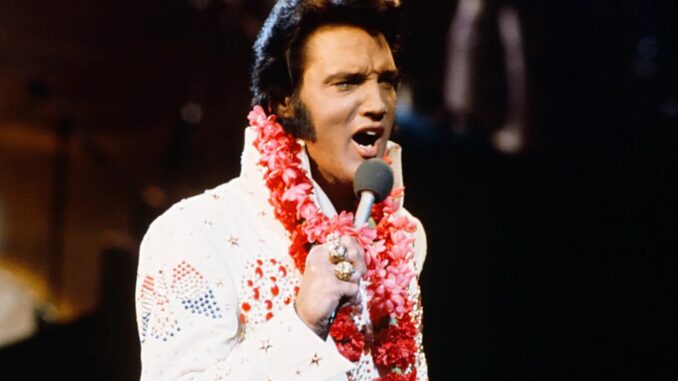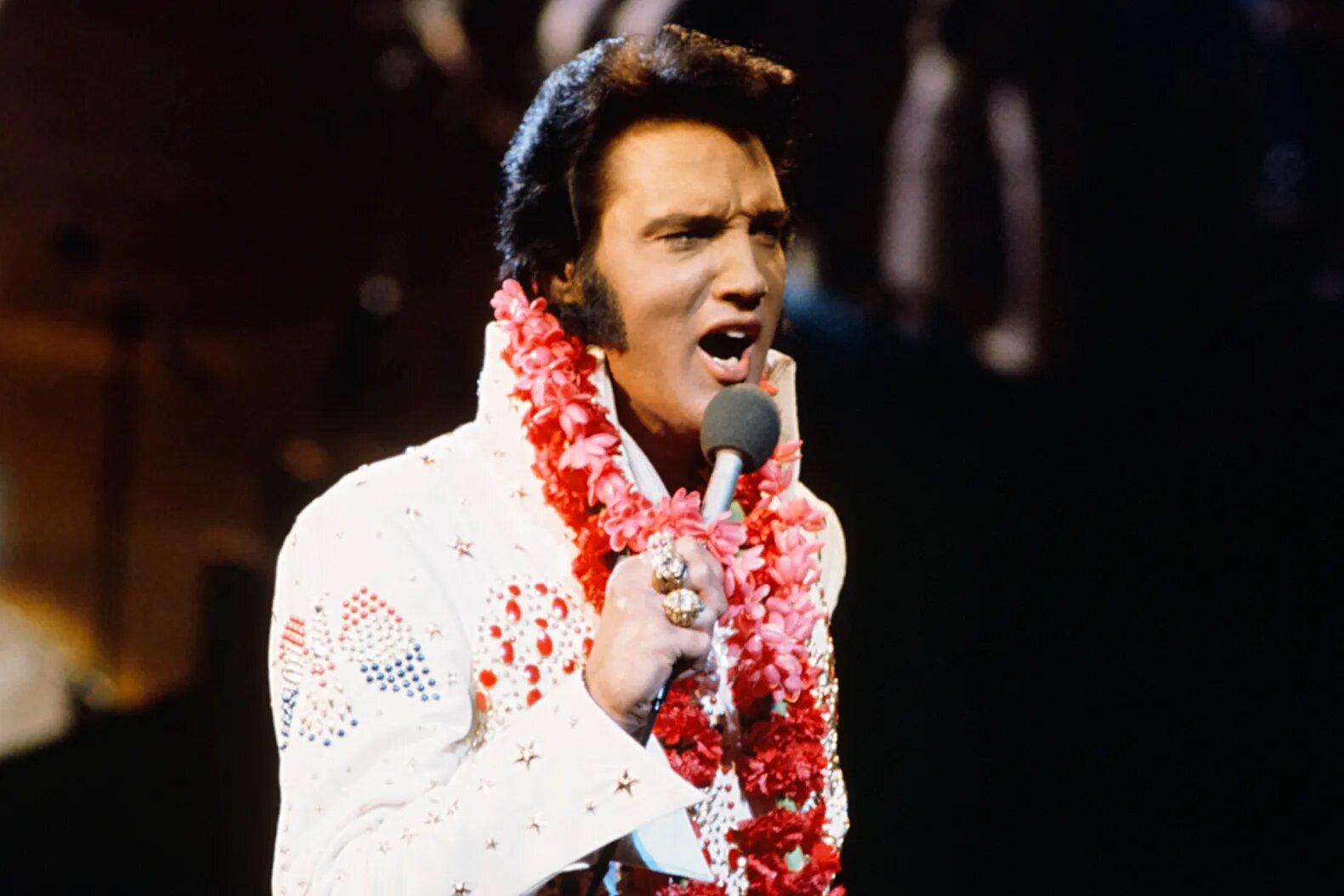
The Elvis Presley coverup: What America didn’t hear about the death of the king
After Presley’s death, an effort was launched to protect the reputation of the hospital that had treated him
The call came to Memphis Fire Station No. 29 at 2:33 p.m. on Tuesday, August 16, 1977. The dispatcher indicated that someone at 3754 Elvis Presley Boulevard was having difficulty breathing. “Go to the front gate and go to the front of the mansion,” the voice directed. Ambulance Unit No. 6 swung out of the station onto Elvis Presley Boulevard and headed south, siren wailing, advertising a speed that the ponderous machine had not yet achieved.
The two medics manning the ambulance recognized the address right away. The “mansion,” as the dispatcher called it, was Elvis Presley’s home, Graceland, three miles south of the fire station. They had been there often, to take care of fans fainting at the front gate and pedestrians injured by passing automobiles. Two years before, one of the medics, Charles Crosby, had come to assist Elvis’s father, Vernon Presley, after he suffered a heart attack. He thought it might be Vernon again.
On this run Crosby was driving the ambulance. He was thirty-eight, stoutly built, dark-haired, and heavily mustached. His partner, Ulysses Jones, twenty-six, sat in the passenger seat. Members of the Memphis Fire Department, they had received eighty-eight hours of special training to become emergency medical technicians and had years of experience. On each call, they alternated between driving and riding in the back with the ill or injured. This time, Ulysses Jones would ride with the patient.
Crosby expertly threaded the boxy white, blue, and orange vehicle through the thin midafternoon traffic with lights flashing. Heat waves shimmered up from the asphalt in front of him. During the day, the mercury had risen into the mid-90s and hovered there. In a city not yet fully air-conditioned, many working Memphians breathed the hot, damp air, mopped their brows, and thought fondly about getting home to an icy drink on their shady screened-in porches.
As the ambulance crested a low hill and swooped down the broad six-lane boulevard toward Graceland, the gates swung open and the crowd milling around the entrance parted. Making a wide sweeping turn to the left, the vehicle bounced heavily across the sidewalk and hurtled through the entranceway, striking one of the swinging metal gates a clanging blow. One of the several musical notes welded to the gate fell off. Crosby accelerated up the curving drive toward the mansion. He braked hard in front of the two-story, white-columned portico. Climbing down from the ambulance, Crosby and Jones were met by one of Elvis’s bodyguards.
“He’s upstairs,” the man exclaimed, “and I think it’s an OD.”
Grabbing their equipment, the two medics rushed into the house and up the stairs. They pushed through Elvis’s bedroom, noticing the deep-pile red rug and the huge unmade bed facing three television consoles, one for each of the three major networks. Passing through a wide doorway, they entered Elvis’s enormous bathroom, what had been two rooms combined into a sitting room, dressing room, and bathroom. Ulysses Jones told a reporter later that day that he saw “as many as a dozen people huddled over the body of a man clothed in pajamas—a yellow top and blue bottoms.”
At first sight Jones didn’t recognize Elvis. The man was stretched out on his back on the thick red rug with his pajama top open and his bottoms pulled down below his knees. Rolls of fat girded his belly. He was very dark, almost black. Jones thought that he might have been a black man. “From his shoulders up, his skin was dark blue,” he told a reporter for the Memphis Press-Scimitar. “Around his neck, which seemed fat and bloated, was a very large gold medallion. His sideburns were gray.” A young man was pressing Elvis’s chest rhythmically, while a middle-aged woman gave him mouth-to-mouth resuscitation. Jones knelt quickly to search for any sign of life in the prostrate form. He felt no pulse, and he saw no flicker of response when he flashed a penlight into his eyes. “Elvis was cold,” he said, “unusually cold.”
People in the room began frantically asking the medics what should be done. Suddenly, as if in response, one young man blurted out helpfully, “We think he OD’d.” It was the second time the medics had heard that opinion. The man seemed to speak for the whole group. No one dissented, but Jones thought the statement caused “a kind of funny stir in the room.” Elvis’s employees were rigorously trained never to mention Elvis and drugs in the same breath. Elvis did not take “drugs” of any kind. If they ever had to say anything at all, they were to say that he was on “medication” prescribed by his physicians. One of the medics asked for the container that held the drugs taken by the victim. None was ever produced.
Jones and Crosby quickly concluded that emergency treatment in a hospital offered the only hope. It took five men to lift the body onto the stretcher. “He must have weighed 250 pounds,” Crosby said.
With much difficulty, they negotiated the stretcher around the corners and down the stairs. Two men had to hold back Elvis’s father, Vernon, as he cried and called out, “Son, I’m coming . . . I’ll be there . . . I’ll meet you there.”
As they were about to leave, a Mercedes-Benz raced up the driveway and lurched to a stop. A stocky middle-aged man with a thatch of white hair dashed from the car and leaped into the back of the ambulance just as the doors closed. It was Elvis’s doctor, George Nichopoulos.
Dr. “Nick” Nichopoulos
Four years later it would be established in court that during the seven and a half months preceding Elvis’s death, from January 1, 1977, to August 16, 1977, Dr. Nichopoulos had written prescriptions for him for at least 8,805 pills, tablets, vials, and injectables. Going back to January 1975, the count was 19,012. The numbers defied belief, but they came from an experienced team of investigators who visited 153 pharmacies and spent 1,090 hours going through 6,570,175 prescriptions and then, with the aid of two secretaries, spent another 1,120 hours organizing the evidence. The drugs included uppers, downers, and powerful painkillers such as Dilaudid, Quaalude, Percodan, Demerol, and cocaine hydrochloride in quantities more appropriate for those terminally ill with cancer. In fact, at about 2:00 a.m. on the morning of his death, Dr. Nick was again ready to prescribe. He responded to a telephone call from Elvis by prescribing six doses of Dilaudid, an opiate that was Elvis’s favorite drug. One of Elvis’s bodyguards, Billy Stanley, drove over to Baptist Memorial Hospital, picked up the pills at the all-night pharmacy, and brought them to Graceland. The bodyguard said that he saw Elvis take the pills. The autopsy, however, showed no traces of Dilaudid in Elvis’s body.
In the fall of 1981 the state tried Dr. Nichopoulos in criminal court for overprescribing drugs to Elvis and a number of other patients. Dr. Nick testified that if he had not given Elvis a large proportion of the drugs he demanded, other doctors would have. By supplying Elvis, he had at least some control over his patient’s intake. His defense was weakened substantially by evidence that he had prescribed an excessive amount of drugs to at least ten other patients, including rock star Jerry Lee Lewis and his own teenage daughter, Chrissy.

On the other hand, it was clearly established that Elvis could, would, and did get any drug he wanted from show business doctors in Las Vegas and Los Angeles. One of his suppliers was a Las Vegas physician called “Flash” by Elvis’s staff, since he would appear on a moment’s notice, syringe in hand, ready to inject Elvis with whatever drug he wanted. The guys said that “Flash liked to attend Elvis’s parties to mix with the overflow of attractive young women present and perhaps find a companion for the evening.” At home in Memphis, Elvis would get packages containing drugs mailed from the West. Sometimes he sent his private plane, the four-engine Lisa Marie, to Las Vegas or Los Angeles to secure drugs from doctors in those cities and ferry them back to Memphis. Sometimes he flew out himself.
Dr. Nick, like Elvis’s other physicians, had been seduced by the frothy glitter of show business, and with his tanned and striking appearance he fit right in. His style diverged from the practice of medicine that was increasingly a matter of business and less a matter of personal service. He was born and reared in Anniston, Alabama, where his father was a highly respected restaurant owner and businessman. George Nichopoulos, however, had not at first been a high achiever. He had not progressed smoothly through college and medical school. He had first entered the University of Alabama on a football scholarship, but dropped out before the school year ended, and he served in the army for two years. He was a student at Birmingham Southern University for a year and then moved on to the University of the South at Sewanee, where he earned his Bachelor of Science degree in 1951. He worked in a research lab at Vanderbilt University before his admission to the medical school in 1952. He failed biochemistry and physiology, was put on probation, and tried to make up for his failures during summer school, but failed again. In the fall, he was not readmitted. He moved to Memphis and for three years worked in the University of Tennessee’s medical school. In 1956, he was readmitted to Vanderbilt Medical School, graduating in 1959. After finishing his training, in 1962 he entered practice in Memphis with several doctors who called themselves the Medical Group.

Leave a Reply